AS bowhunters, we spend a lot of time practising and perfecting our bowhunting technique, or finding stray arrows in my case.
Obviously, before the stalk begins, the animal must first be spotted. Many of the areas we hunt in Australia consist mainly of thick bush or fields with moderate scrub, making spotting game a difficult task. Properly tracking animals and their movements is a vital skill that I believe all bowhunters should have.
Learning to interpret animal movements and understanding where they have or haven’t been is crucial when hunting and will help you understand what your quarry is doing when you want to hunt it. A lot of my tracking work begins at a water source because dams and creeks are guaranteed to have animal traffic nearby as a result of animals coming to drink throughout the day.
Always approach a water source with the wind in your face because it is very common to creep up on a dam and realise a pig or a mob of goats is only several yards away. Once at the dam, creek or whatever it may be, it’s always good practice to look for game trails leading away from the area. Mid-morning these trails will be used heavily, especially by pigs trying to get back to their hidey holes before the midday heat, so by following these you will more often than not come across some activity.
Make sure you plan your route out of the area and follow a trail that leads into the wind. It’s also handy to figure out what the wind will be doing further down the track or in the next valley you intend to hunt. It can be a real bummer to reach a point where the wind is blowing from a different direction, resulting in all the game high-tailing it out, leaving you empty-handed and having to replan your entire stalk.
Unfortunately it is a situation many of us know all too well. When hunting thicker, scrubby areas where game is hard to spot, game trails are a hunter’s best friend. Not only do they usually provide an easier route through the bush, but all the key signs of game activity can be found on or around them. When walking a game trail, look for fresh droppings because these will help you identify what animals have been through and how recently they were in the area.
Don’t be afraid to get your hands dirty either. Test the temperature of any scat by touching it – if it’s warm, it’s fresh. A lot of game trails will generally lead to small wallows, which animals such as deer and pigs commonly use. Wallows are great to use to find game, but don’t misinterpret their depth and try to walk through. Experience has taught me they can really wake you up, especially on freezing mornings in winter… not pleasant!
When inspecting a wallow, always look to see how murky the water is. If it’s very muddy and looks as if it’s been stirred up, then you are hot on the trail of something. Just make sure it isn’t a roo, because it isn’t great fun finding out that big boar you’ve been tracking for an hour is actually Skippy. The mud around wallows can also leave key signs that make tracking easier.
Prints left by passing game are easily identifiable in the mud and it isn’t too hard to distinguish the difference between a roo print and a pig trotter. To test how fresh the print is, simply feel the temperature at the base of the print. If it’s a different temperature to the surrounding soil then you’re onto some fresh tracks, so keep following them. When it comes to crunch time and you are out in the bush putting all that practice to the test, the best thing you can do is keep your eyes open (coffee helps) and look for as many animal signs as possible.
Remember to keep the wind in your face and stealth on your side. ONE of the true challenges of bowhunting is stalking. As hunters, the stalk is what we live for because it is when the true predator and prey relationship is felt between hunters and their quarry.
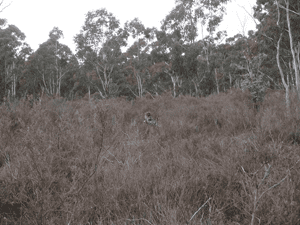
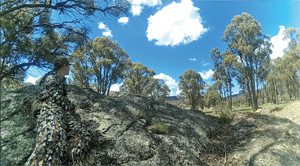
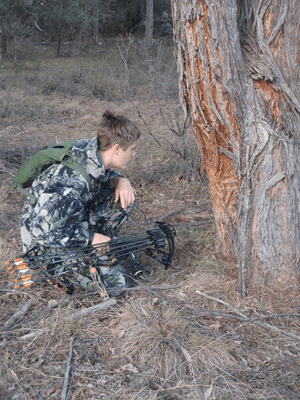
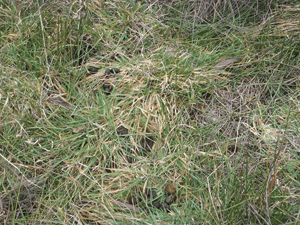
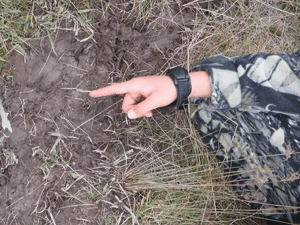

Like many aspects of bowhunting, stalking requires a high level of patience, which is something most of us can have a little trouble with at times. It also requires a reasonable amount of knowledge about your intended quarry’s habits, such as knowing when they are alert or at rest. Whether you are a beginner who’s keen to venture out into the world of hunting or an experienced shooter, these tips will equip you with and improve your hunting skills.
The wind is the most vital thing to pay attention to when stalking. All game will react to a foreign scent in the air, especially deer and pigs. When stalking game, keep the wind in your face at all times and try to move when the wind is gusting because this will minimise the chance of your prey catching wind of you. Windy days can also help to cover the noise you make.
It is always best to have some form of breeze blowing because when it is calm your scent will linger and animals with a keen sense of smell, such as pigs, will be able to smell you no matter where you are. I like to keep track of the wind by using a small powder puffer. When it’s hard to tell what the wind is doing, blow a couple of puffs into the air and you’ll get a clear idea as to what’s going on.
Understanding your prey’s eyesight is also vital when stalking and can be the difference between a two-hour stalk and a 30-minute stalk. Animals including goats and deer have amazing vision and can spot you from a mile away, so only move when you are behind cover or the animals are feeding. Pigs, on the other hand, are nearly blind and can only make out vague shapes.
If you can get past their keen sense of smell, a stalk on a mob of pigs can be made very quickly if you move straight towards them or along the edge of some scrub. I’ve found that positioning any form of tree or shrub between you and the pigs is an easy way of closing the distance quickly. Often you can walk right up on them without them knowing. An animal’s hearing is what commonly catches hunters out during a stalk.
Just like scents, any foreign noises will quickly get an animal’s attention, so be as stealthy as possible when using your rangefinder or removing arrows from your quiver. Most game including deer, rabbits, foxes and wild dogs have very good hearing, so when hunting these critters, make sure you eliminate as much noise as possible. Many people underestimate goats’ ability to hear, perhaps due to their floppy ears, but be assured they are very well tuned in.
Just like their eyesight, pigs lack terrific hearing, so if they’re feeding and you have cover between you and them, don’t waste any time; get in quickly because pigs can disappear very swiftly. I follow a few simple rules when stalking. The first is making sure I know what is under my feet when walking. I’m sure I’ve had pigs laugh at me when I’ve fallen into a hidden wallow among the thick stuff halfway through a stalk. It’s also good to step in accordance with what’s underfoot.
Crunchy mud or dry dirt requires serious patience. The best thing to do is tread as lightly and slowly as possible. A little trick I’ve learnt is to tread heel first, rolling onto the outside of my foot. This makes very little noise and is also very effective when treading through areas with plenty of leaves on the ground. Another rule I follow is to never crawl towards the final stages of a stalk.
Though it looks cool and is fun, crawling can make a lot of unnecessary noise and it is very hard to get into a shooting position when you’re on your belly 20m away from some animals. Therefore, the best thing you can do is stay on your feet. If there is little cover, just be patient and take your time. Animals rarely expect danger to come from an open field, so standing upright and taking very small steps very slowly can prove to be lethal and has worked for me.
The final rule I follow when stalking is to never have the sun on my back. Animals can pick an odd-looking silhouette very easily, and even when the wind and everything else is going for you, most animals will still get suspicious, resulting in a blown stalk. Try to keep the sun to your side at all costs, but if that isn’t going to work with what the wind is doing, keep to the shadows as much as possible.
It’s not uncommon to have to wait a few hours for a mob of game to move into a different area because the spot they are currently in makes a stalk impossible. Unfortunately, even though you follow every step, somehow you can still get caught out and end up with a nanny or doe staring straight at you. In this situation, the best thing you can do is not move and definitely do not make eye contact.
Never look prey animals in the eye because this will quickly deter them. Humans have the typical predatory feature of forward-facing eyes, which prey animals such as goats and deer look for when investigating that strange, moving bush. Unfortunately they’ll recognise it if you turn your head, so try to look at the ground below the animal or just to the side.
Another thing to remember is to not wear sunglasses. The glare from sunnies can scare the hell out of animals if it hits them in the face, and most of the time this will result in them heading up a mountain and you heading back to the truck. In the end, stalking can be either very easy or very hard, however if you follow these tips you’ll enjoy much more success.
The key is not to rush but not go too slowly, because animals can move quickly. Keep the wind and sun on your side, tread lightly and stay hidden.
Tight groupings.
 Bush ‘n Beach Fishing Magazine Location reports & tips for fishing, boating, camping, kayaking, 4WDing in Queensland and Northern NSW
Bush ‘n Beach Fishing Magazine Location reports & tips for fishing, boating, camping, kayaking, 4WDing in Queensland and Northern NSW










This is a helpful tips. thanks you very much for this good idea